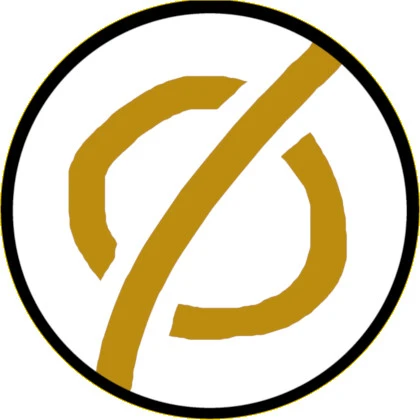Context is that I had to register for a lot of accounts recently and some of the rules really make no sense.
Not name-and-shaming, but the best one I’ve seen recently is I might have accidentally performed an XSS attack on a career portal using a 40-digit randomly generated password…
Not so much password requirements as just a completely removed implementation:
To access payment stubs in a data center (not us) that I worked at, the user account was our public email address and the password was a personal code, sorta like SSN, but that code could be easily looked up as it was public info.
I showed the director of HR, who authorized this her own payment stub as evidence that this was baaaaadddd
So she asked me to check that system for more issues
Turns out it stored passwords in blank (wtf) and would authenticate with two queries. First query would check if the username (email) exists. Second query would check if the password exists. If both exists, you’re in! So i could login to any account with MY password…
This is a tip of a very big iceberg there
This has to be the best one here. The sheer lack of understanding of how to authenticate an account by the dev.
Sounds like the initial part of password testing, and then they either forgot to complete it, or someone came along to fix the later parts, commented them out for testing and never got around to fixing/uncommenting. Surprising how often things that ‘work’ are set aside and no one is in charge of reviewing.
Passwords that must contain a special character, but only from a list of three special characters.
Passwords that must be changed every 3 months.
Absurdly narrow length requirements, im 80% sure I saw one that required 8-16 characters.
All dictionary words were banned from being in a password regardless of length, so passphrases weren’t allowed.
I’ve definitely had one that was 8-12 characters before…
deleted by creator
It’s always quote unquote fun finding out what words are and are not in their dictionary. I got by using a bunch of nerd words, but apparently Aragorn is not allowed.
- There was the multi user operating system in the 1990s that required every user to have a unique password. We were young and innocent then and used common English words. Upon changing your password, it would check your new password against all other users. An error like
That password is already used by johnp. Please choose another password.was not uncommon.
- When I started using a password manager, I got keen and changed my passwords to 64 random characters. My bank would change this to uppercase, delete special characters, and save the first 8 characters of what was left. So when I logged in, it would compare the 64 character password I entered to the converted 8 character password that they saved, and find that they were different. (I found this out when I rang and complained, and they told me my password over the phone … 😱). They don’t do that any more.
The oddest I’ve ever encountered: EXACTLY 15 characters long. No more, no fewer. 15.
Honorable mention: Various online accounts where I used my password manager to generate a long, secure password, which the website accepted without warning or error. I was then locked out because their user management system could not handle such long passwords (had to create a second account with a much shorter password to find that out) 🤣
The first one is absurd. The second one is straight up messed up.
Not allowing you to paste a password, so you have to type it manually every time.
I’ve noticed this with ACH routing forms on many financial websites. You can’t copy the routing number nor account number—no—thou shalt key in by hand instead.
Never understood the logic here, do the developers want you to make a mistake?
The’logic’ behind it is that if you copy/paste, then the confirmation box is basically useless. If you copied the wrong account of just part of it, your for sure going to paste in the exact same thing without really checking. Not that it’s a good reason, but at least there’s some logic
Well if you’re going to hijack my paste command just hide the confirmation box ¯_(ツ)_/¯
Most password managers will have an auto type (not auto fill, that is different) so you can still automate your login.
My old bank required you to have a password 12 characters long exactly, and to login you have to give the characters in specific places.
I would ask you what are the 4th, 7th, and 11th letters of your password.
Anyone want to guess why that aren’t my bank anymore?
Oh yeah, mine has that as one of the options, but they’ve beefed it up a little. You also have to enter your date of birth and then they send a text to a pre-arranged number with a further 6-digit PIN that also has to be used.
E and U and 2
So like a 3 letter password but with extra steps?
Stupid bank app doesn’t allow password managers… and if you hit the enter button to login you get an error message informing you that you need to mouse click on the button.
you get an error message
The person responsible for that specific behavior is a psychopath.
Here’s how to improve it:
Make you have to mouse click the button. However, it has to be a right click. Specifically, a right double-click.
DOUBLE RIGHT-CLICK THE BUTTON?!? ARE YOU MAD?!?
There are more things in Heaven and Hell then are dreamt of in your philosophy. This one specifically is from Hell.
I wonder if blind folk could even use that website then.
Not sure if it falls under the same category, but the way Activision handles (handled? I haven’t used them since) passwords was atrocious! I had to reset my password to get back into my account, I used a random diceware password, it accepted it. However! The client on both Windows and Xbox wouldn’t let you input a password longer than I believe 20 characters. So while you can set a 25 character password, you can go fuck yourself if you actually wanna log in…
Probably the silliest thing I have run into was some game. It asked you to set two passwords. You needed both to login. The second password couldn’t be changed. This is why it was secure, see. (…What.)
When I created my account and set the second password, I couldn’t log on the second time. Because I had entered a 20 character second password. It was accepted and verified during the account creation just fine. On the second login, it only accepted 16 characters. (It let you enter 20 characters but said it was too long.) Trying to enter first 16 characters of the second password didn’t work, of course.
I then contacted the support, and they did manage to reset the second password anyway. (What is this even)
The Catholic Church is doing great with its two popes.
My work was using some MS-based account system, but I don’t know if this was stock or something they modified. When you had to change your password, it would tell you if your new password didn’t meet the password requirements, as usual. What it wouldn’t tell you was what those requirements were…
So yeah, the requirements the system won’t tell you about would have to be the worst one i came across…
I had a wi-fi device a few years ago that would require a password up to 12 characters, but that requirement wasn’t explicitly written anywhere. The device would gladly accept a 13-character password, for example, but you would never be able to log in again (factory-resetting was the only way to undo).
More recently I purchased a Lennox HVAC system that came with their proprietary thermostat (an Android tablet with a wall mount). During the Christmas break I got myself a new wi-fi router and had to reconfigure all my wireless devices. After 2 days, the Lennox thermostat was the last device to join the new wi-fi network… and it failed because their password could have any character EXCEPT the asterisk — and my new password had an asterisk. I didn’t like the idea of redoing all my other devices AGAIN just because of this idiotic password rule, so I ended up creating a new SSID just for the thermostat. I named it LENNOXSUCKS.
By far the worst is the costa rican national bank:
- Must be between 8 and 16 characters long
- Must have at least 4 letters and 4 numbers
- Can’t have consecutively repeated characters (can’t do “aa” but can do “aba”)
- Can’t have vowels or Ñ
- Must not be one of your last 6 passwords
- Must be changed every 90 days
- Also forgot that their website and app try to block password managers and copy and paste
I was reading along like, that’s dumb but at least I could craft something in my password man-… Oh… oh no…
“Password must contain letters numbers, and at least one of these special characters.”
Turns out, half of those special characters weren’t allowed 🫠
Extremely limited password length. I think it was around 6 or 8 characters. Exactly! So every password was the same length.
No other requirements. The best part? It was a bank. But not a customer facing service.
Banks are amazingly bad at digital security. I once was in a bank (where my wife had an account) where they used first generation wireless keyboards. The ones that did not encrypt anything and could be received to a distance of up to 10m, more if you had a better antenna. I told them about the security issues, but they did not understand. I went to the newspaper agent and bought the newest edition of a computer magazine that had detailed descriptions of how to eavesdrop on those keyboards, returned to the bank, and handed them the article. Which featured exactly their keyboard model as the title photo. I told them “If you don’t understand this, it’s fine, but then give it to the person responsible for your IT and security, they should know how to deal with this.”
Next time we were there, they still had the insecure keyboards. Yes, the IT department had told them that they should replace them with wired ones, but they rejected it, because the wireless ones were sooo convenient. Our next move was to close my wifes’ account there.
My bank had a limit of six characters, for the customer facing login. Oops.
Westpac?
Yes 🤭
Haha knew it. Redic parameters
Not sure but I think Schwab did it too.
A company I used to work for is big enough that everyone reading this has heard of it. They had this wonderful security nightmare going on:
When you were hired, the company would issue your user credential with a standard password that was “CompanyName1” and require you to immediately change it at first logon. Everyone knew this password because everyone got it when they were hired.
Password policy required everyone to reset their password every 60 days. Not the worst ever but still pretty aggressive. And with the rise of all the mobile devices connecting with your corp account it was getting to be a worse and worse experience.
Can you guess yet how these two policies are linked in my story?
Well, some of the C-Suite executives didn’t have time for any of these security shenanigans. So they would have their executive support person log into an administrative console and reset the exec’s password every 59 days to the same value that it currently had, thereby bypassing the password re-use filter.
That value they were continuously setting was… “CompanyName1”
I know of at least two executives that were doing this while I worked there.
When I was in middle and high school the school district would always do this at the beginning of the school year.
One year my best friend moved away so in the following years I discovered his account still existed. If I was in the mood to hack (dumb stuff like forging email with their horrible SMTP server for example) I’d just find another computer I wasn’t just using and log in using the default password.






